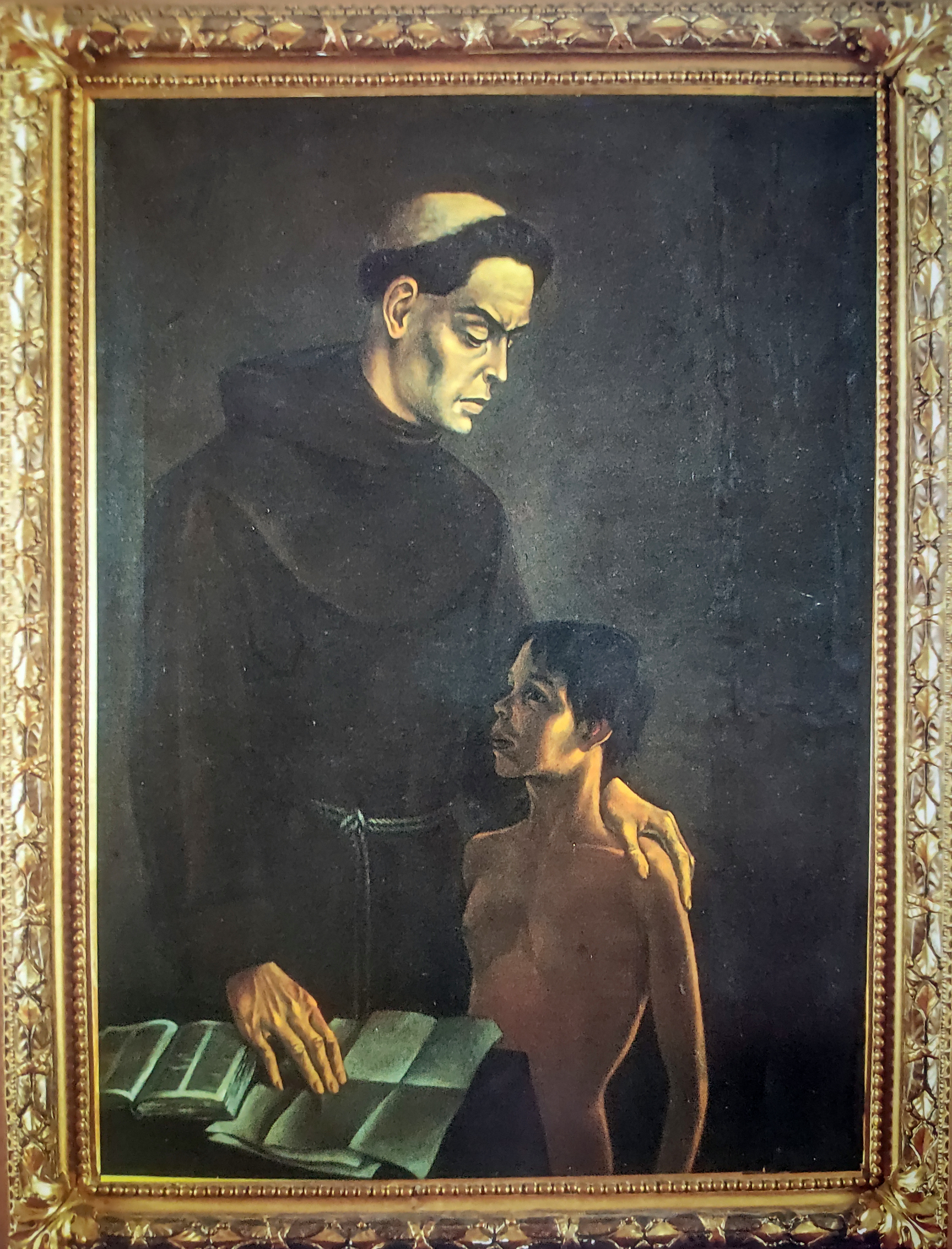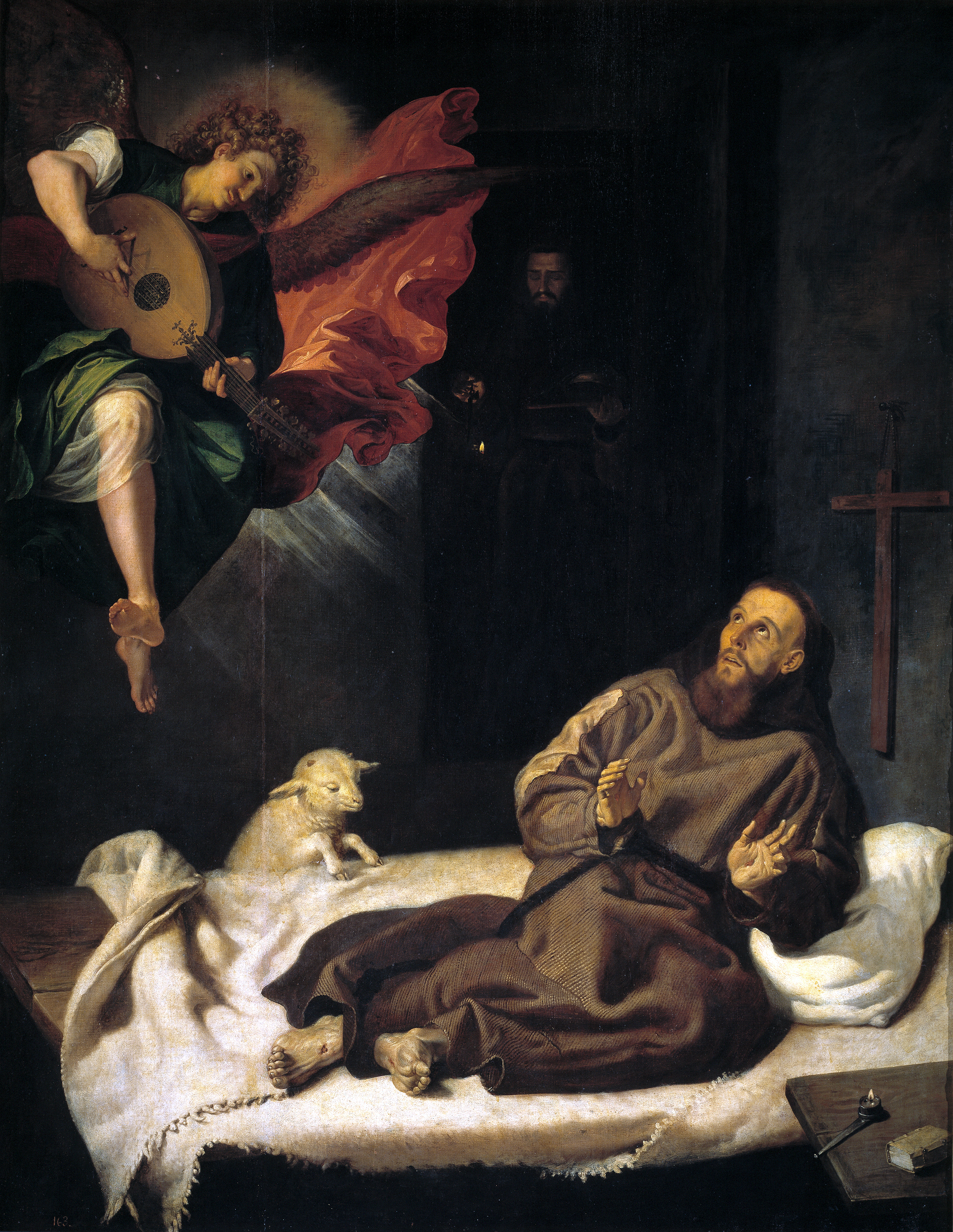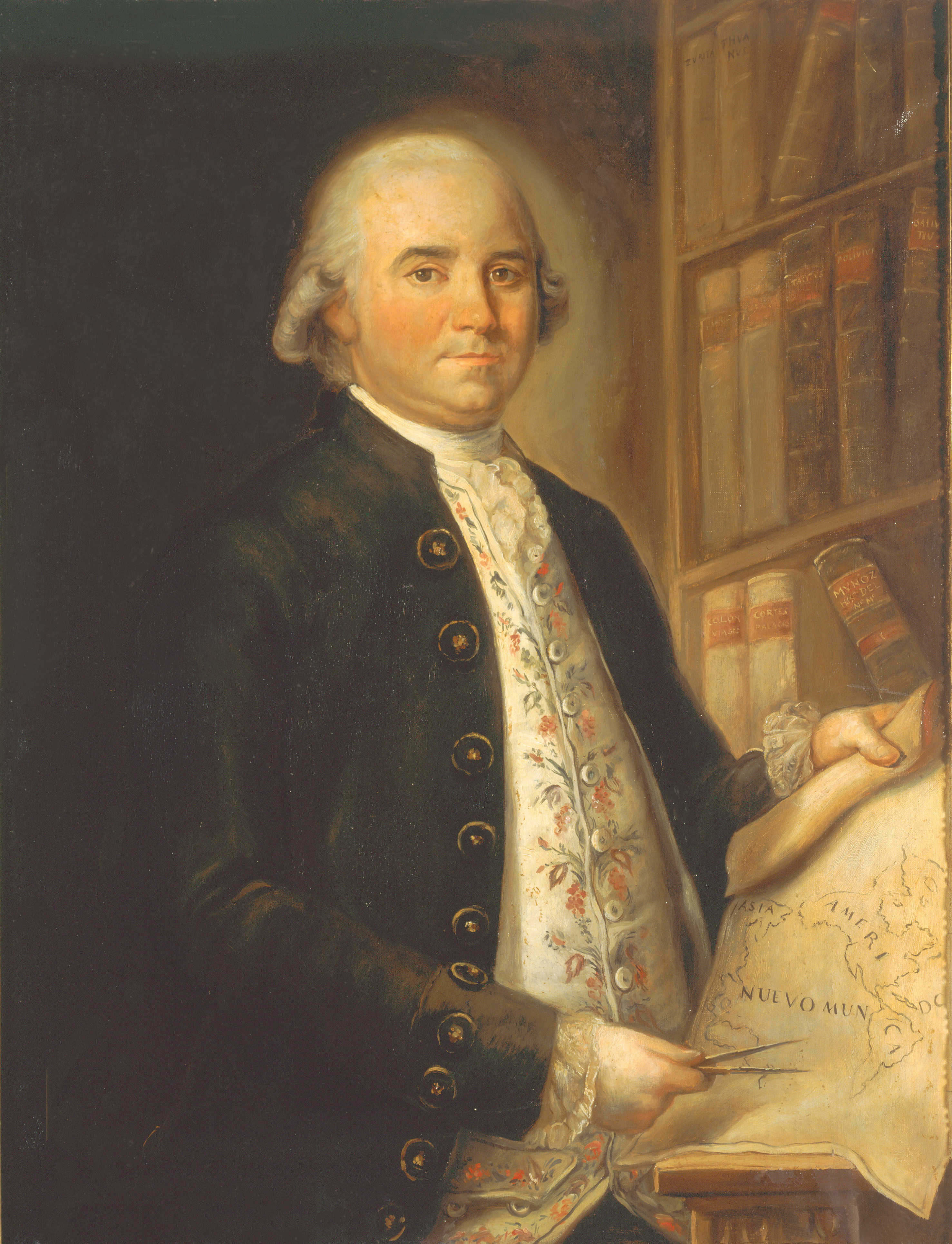|
Pedro De Aguado
Friar Pedro de Aguado (1513 or 1538 – late 16th or early 17th century) was a Spanish Franciscan friar who spent around 15 years in the New Kingdom of Granada, preaching to the indigenous people. During this time he collected source material for a history of the region, and began a manuscript, ''Recopilación historial'', which he completed in Spain between 1576 and 1583 but was unable to publish. The manuscript was used by other historians, but was not published until the twentieth century. Biography De Aguado's date of birth is uncertain. He is believed by Juan Friede to have been baptised in Valdemoro on 26 January 1513, whilst Guillermo Morón argues for 16 February 1538. Arriving in the New World in 1560 or 1561 in Cartagena, his movements are uncertain until his arrival in Bogotá in 1571, although it is likely he soon left Cartagena to minister to the Muisca. By around 1564 he was a pastor to the Muisca at Cogua, and he was able to build two churches there. Cog ... [...More Info...] [...Related Items...] OR: [Wikipedia] [Google] [Baidu] |
Franciscan
The Franciscans are a group of related Mendicant orders, mendicant Christianity, Christian Catholic religious order, religious orders within the Catholic Church. Founded in 1209 by Italian Catholic friar Francis of Assisi, these orders include three independent orders for men (the Order of Friars Minor being the largest contemporary male order), orders for women religious such as the Order of Saint Clare, and the Third Order of Saint Francis open to male and female members. They adhere to the teachings and spiritual disciplines of the founder and of his main associates and followers, such as Clare of Assisi, Anthony of Padua, and Elizabeth of Hungary. Several smaller Franciscan spirituality in Protestantism, Protestant Franciscan orders exist as well, notably in the Anglican and Lutheran traditions (e.g. the Community of Francis and Clare). Francis began preaching around 1207 and traveled to Rome to seek approval from Pope Innocent III in 1209 to form a new religious order. The o ... [...More Info...] [...Related Items...] OR: [Wikipedia] [Google] [Baidu] |
Pedro Simón
''Fray'' Pedro Simón ( San Lorenzo de la Parrilla, Spain, 1574 - Ubaté, New Kingdom of Granada, ca. 1628) was a Spanish franciscan friar, professor and chronicler of the indigenous peoples of modern day Colombia and Venezuela, at the time forming the New Kingdom of Granada. Pedro Simón is one of the most important Muisca scholars forming the basis for later scholars such as Lucas Fernández de Piedrahita, Alexander von Humboldt, Javier Ocampo López and many others. Biography Pedro Simón studied in Cartagena, Spain and went to Cartagena de Indias in 1603.Biography Pedro Simón - Biografías y Vidas Simón accompanied Juan de Borja and described his war against the < ... [...More Info...] [...Related Items...] OR: [Wikipedia] [Google] [Baidu] |
16th-century Births
The 16th century begins with the Julian year 1501 ( MDI) and ends with either the Julian or the Gregorian year 1600 ( MDC) (depending on the reckoning used; the Gregorian calendar introduced a lapse of 10 days in October 1582). The 16th century is regarded by historians as the century which saw the rise of Western civilization and the Islamic gunpowder empires. The Renaissance in Italy and Europe saw the emergence of important artists, authors and scientists, and led to the foundation of important subjects which include accounting and political science. Copernicus proposed the heliocentric universe, which was met with strong resistance, and Tycho Brahe refuted the theory of celestial spheres through observational measurement of the 1572 appearance of a Milky Way supernova. These events directly challenged the long-held notion of an immutable universe supported by Ptolemy and Aristotle, and led to major revolutions in astronomy and science. Galileo Galilei became a champion ... [...More Info...] [...Related Items...] OR: [Wikipedia] [Google] [Baidu] |
Franciscan Missionaries
, image = FrancescoCoA PioM.svg , image_size = 200px , caption = A cross, Christ's arm and Saint Francis's arm, a universal symbol of the Franciscans , abbreviation = OFM , predecessor = , merged = , formation = , founder = Francis of Assisi , founding_location = , extinction = , merger = , type = Mendicant Order of Pontifical Right for men , status = , purpose = , headquarters = Via S. Maria Mediatrice 25, 00165 Rome, Italy , location = , coords = , region = , services = , membership = 12,476 members (8,512 priests) as of 2020 , language = , sec_gen = , leader_title = Motto , leader_name = ''Pax et bonum'' ''Peace and llgood'' , leader_title2 = Minister General , leader_name2 = ... [...More Info...] [...Related Items...] OR: [Wikipedia] [Google] [Baidu] |
Historians Of Venezuela
A historian is a person who studies and writes about the past and is regarded as an authority on it. Historians are concerned with the continuous, methodical narrative and research of past events as relating to the human race; as well as the study of all history in time. Some historians are recognized by publications or training and experience.Herman, A. M. (1998). Occupational outlook handbook: 1998–99 edition. Indianapolis: JIST Works. Page 525. "Historian" became a professional occupation in the late nineteenth century as research universities were emerging in Germany and elsewhere. Objectivity During the ''Irving v Penguin Books and Lipstadt'' trial, people became aware that the court needed to identify what was an "objective historian" in the same vein as the reasonable person, and reminiscent of the standard traditionally used in English law of "the man on the Clapham omnibus". This was necessary so that there would be a legal benchmark to compare and contrast the scholar ... [...More Info...] [...Related Items...] OR: [Wikipedia] [Google] [Baidu] |
Historians Of Colombia
A historian is a person who studies and writes about the past and is regarded as an authority on it. Historians are concerned with the continuous, methodical narrative and research of past events as relating to the human race; as well as the study of all history in time. Some historians are recognized by publications or training and experience.Herman, A. M. (1998). Occupational outlook handbook: 1998–99 edition. Indianapolis: JIST Works. Page 525. "Historian" became a professional occupation in the late nineteenth century as research universities were emerging in Germany and elsewhere. Objectivity During the ''Irving v Penguin Books and Lipstadt'' trial, people became aware that the court needed to identify what was an "objective historian" in the same vein as the reasonable person, and reminiscent of the standard traditionally used in English law of "the man on the Clapham omnibus". This was necessary so that there would be a legal benchmark to compare and contrast the scholar ... [...More Info...] [...Related Items...] OR: [Wikipedia] [Google] [Baidu] |
Jerónimo Bécker
Jerónimo Bécker y González (2 December 1857 - 25 May 1925) was a Spanish historian, diplomat and journalist. Bécker was born in Salamanca. He became a member of the ''Real Sociedad Geográfica de España'' in 1913, and was awarded the Knight Grand Cross of the Order of Isabella the Catholic The Order of Isabella the Catholic ( es, Orden de Isabel la Católica) is a Spanish civil order and honor granted to persons and institutions in recognition of extraordinary services to the homeland or the promotion of international relations a ... in 1914. He died in Madrid, aged 67. External links * * 1857 births 1925 deaths 20th-century Spanish historians Spanish journalists Knights Grand Cross of the Order of Isabella the Catholic 21st-century Spanish historians People from Salamanca {{Spain-historian-stub ... [...More Info...] [...Related Items...] OR: [Wikipedia] [Google] [Baidu] |
Joaquín Acosta
Tomás Joaquín de Acosta y Pérez de Guzmán (December 29, 1800February 21, 1852) was a Colombian explorer, historian, chorographer, and geologist. A native of Colombia in South America, he served in the Colombian army and in 1834 attempted a scientific survey of the territory between Socorro and the Magdalena River. Seven years later he explored western Colombia from Antioquia to Anserma studying its topography, its natural history and the traces of its aboriginal inhabitants. In 1845 he went to Spain to examine such documentary material concerning Colombia and its colonial history as was then accessible, and three years later he published his ''Compendio'', a work on the discovery and colonization of New Granada (Colombia). The map accompanying this work, now out of date, was very fair for the time, and the work itself is still valuable for its abundant bibliographic references and biographic notes. What he says in it of the writings of Gonzalo Jiménez de Quesada th ... [...More Info...] [...Related Items...] OR: [Wikipedia] [Google] [Baidu] |
Valencia
Valencia ( va, València) is the capital of the Autonomous communities of Spain, autonomous community of Valencian Community, Valencia and the Municipalities of Spain, third-most populated municipality in Spain, with 791,413 inhabitants. It is also the capital of the Province of Valencia, province of the same name. The wider urban area also comprising the neighbouring municipalities has a population of around 1.6 million, constituting one of the List of coastal settlements of the Mediterranean Sea, major urban areas on the European side of the Mediterranean Sea. It is located on the banks of the Turia (river), Turia, on the east coast of the Iberian Peninsula, at the Gulf of Valencia, north of the Albufera lagoon. Valencia was founded as a Roman Republic, Roman colony in 138 BC. Al-Andalus, Islamic rule and acculturation ensued in the 8th century, together with the introduction of new irrigation systems and crops. Crown of Aragon, Aragonese Christian conquest took place in ... [...More Info...] [...Related Items...] OR: [Wikipedia] [Google] [Baidu] |
Real Academia De La Historia
The Real Academia de la Historia (RAH, 'Royal Academy of History') is a Spanish institution in Madrid that studies history "ancient and modern, political, civil, ecclesiastical, military, scientific, of letters and arts, that is to say, the different branches of life, of civilisation, and of the culture of the Spanish people". The Academy was established by royal decree of Philip V of Spain on 18 April 1738. Building Since 1836 the Academy has occupied an 18th-century building designed by the neoclassical architect Juan de Villanueva. The building was originally occupied by the Hieronymites, a religious order. It became available as a result of legislation in the 1830s confiscating monastic properties (the ecclesiastical confiscations of Mendizábal). Collections As formerly the main Spanish institution for antiquaries, the Academy retains significant libraries and collections of antiquities, which cannot be seen by the public. The keeper of antiquities is the prehistorian Mar ... [...More Info...] [...Related Items...] OR: [Wikipedia] [Google] [Baidu] |
University Of Valencia
The University of Valencia ( ca-valencia, Universitat de València ; also known as UV) is a public research university located in the city of Valencia, Spain. It is one of the oldest surviving universities in Spain, and the oldest in the Valencian Community. It is regarded as one of Spain's leading academic institutions. The University was founded in 1499, and currently has around 55,000 students. Most of the courses are given through the medium of Spanish, but the university has promised to increase the number of courses available in Valencian. Moreover, in some degrees part of the teaching is in English. It is located in the Mediterranean Spanish baseline, in the city of Valencia which is the capital and most populous city of the autonomous community of Valencia and the third largest city in Spain, with a population of 829,705 in 2014. One of its campuses is located in the metropolitan area of Valencia, in the municipalities of Burjassot and Paterna. The current chancellor ... [...More Info...] [...Related Items...] OR: [Wikipedia] [Google] [Baidu] |
Juan Bautista Muñoz
Juan Bautista Muñoz (Museros, 12 June 1745 – Madrid, 19 July 1799) was an 18th-century Spanish philosopher and historian. Biography Born in Museros (near Valencia) in 1745, Juan Bautista Muñoz was the third of four sons.Bas Martín, Nicolás (2002) ''El cosmógrafo e historiador Juan Bautista Muñoz, 1745-1799''. Valencia: Universitat de Valencia. After the death of his father in 1751, his mother placed him under the tutelage of his uncle, the Dominican friar Gabriel Ferrandis at the convent of Pilar de Valencia, where he began to receive his first formal education. From 1753 to 1757, Muñoz was enrolled at the Jesuit seminary in Valencia, where he came under the influence of the polymath Antonio Eximeno Pujades, and began to take an interest in mathematics and modern philosophy. Academic at Valencia From 1757 to 1770, Juan Bautista Muñoz was at the University of Valencia, initially as a student, then as a teacher. He received his master of arts and bachelor in ... [...More Info...] [...Related Items...] OR: [Wikipedia] [Google] [Baidu] |








